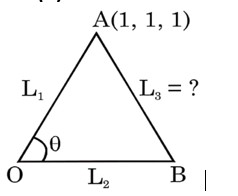Maths
Get insights from 6.5k questions on Maths, answered by students, alumni, and experts. You may also ask and answer any question you like about Maths
Follow Ask QuestionQuestions
Discussions
Active Users
Followers
New answer posted
2 months agoContributor-Level 10
dy/dx = (e? – x)? ¹
dx/dy = e? - x
dx/dy + x = e? ⇒ I.F. = e^ (∫dy) = e?
∴ xe? = ∫e? dy + c
xe? = e²? /2 + c
y (0) = 0 ⇒ c = -1/2
∴ x = e? /2 - (1/2)e? ⇒ e? – e? = 2x
e²? – 2xe? - 1 = 0
e? = x ± √ (x² + 1) ⇒ e? = x + √ (x² + 1)
y = ln (x + √ (x² + 1)
New answer posted
2 months agoNew answer posted
2 months agoContributor-Level 10
First element in 20th group is equal to '20'.
(20, 21, ….upto 39 times)
New answer posted
2 months agoContributor-Level 10
(k-3)/ (h-2) * (k-0)/ (h-0) = -1
⇒ k (2k – 3) = -2 (h – 2)h
⇒ 2h² + 2k² – 4h – 3k = 0
2x² + 2y² – 4x – 3y = 0
(0,0)
New answer posted
2 months agoNew answer posted
2 months agoContributor-Level 10
C.V. = (σ/x? ) * 100 ⇒ σ = (C.V. * x? ) / 100
∴ σ? = (50*30)/100 = 15 and σ? = (60*25)/100 = 15 ⇒ σ? - σ? = 0
New answer posted
2 months agoContributor-Level 10
Equation of tangent is (x/a) (1/2) + (y/b) (√3/2) = 1
Equation of auxiliary circle is x² + y² = a²
Homogenising (ii) with (i) and making coefficient of x² + coefficient of y² = 0
⇒ (3a²/4b²) - (7/4) = 0 ⇒ e = 2/√7
Taking an Exam? Selecting a College?
Get authentic answers from experts, students and alumni that you won't find anywhere else
Sign Up on ShikshaOn Shiksha, get access to
- 65k Colleges
- 1.2k Exams
- 679k Reviews
- 1800k Answers

